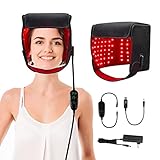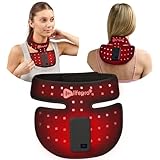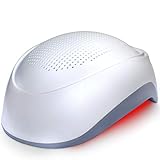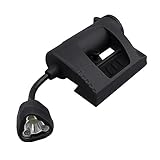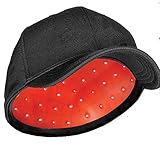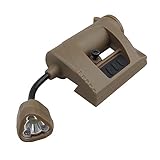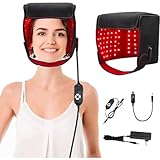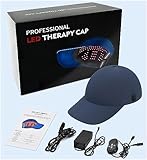Ultimate Buying Guide for Red Light Therapy Helmets for Brain Health
Red light therapy helmets are gaining traction as a non-invasive method to enhance brain health. This guide will provide you with essential insights into selecting the best red light therapy helmet for cognitive enhancement and overall brain wellness.
Understanding Red Light Therapy for Brain Health
Red light therapy, also known as photobiomodulation, involves using specific wavelengths of light to penetrate the skull and stimulate brain cells. This process can enhance cognitive function, improve mental clarity, and potentially support the treatment of neurological disorders.
Key Features to Consider
1. Wavelength and Light Source
- Optimal Wavelength: For brain health, the effective wavelength range is typically between 600-1100 nanometers. This range ensures adequate penetration and therapeutic effect.
- LED vs. Laser: Both LEDs and lasers are used in helmets, but lasers tend to penetrate deeper into the brain tissue. Some helmets combine both technologies for optimal results.
2. Power Density
- Measured in mW/cm²: Power density affects the depth of light penetration. Helmets with higher power densities can deliver more effective treatment, but ensure they stay within safe limits to avoid potential side effects.
3. Treatment Coverage
- Full Scalp Coverage: Helmets should cover the entire head to ensure even distribution of light and comprehensive treatment. Some models may focus on specific areas, but full coverage is generally more effective for overall brain health.
4. Session Duration and Frequency
- Recommended Duration: Most helmets suggest sessions lasting between 10-30 minutes. Consider your schedule and choose a helmet that fits your routine.
- Treatment Frequency: Typically, 2-4 sessions per week are recommended. Ensure you can commit to this frequency for optimal benefits.
5. Comfort and Fit
- Adjustable Design: Look for helmets with adjustable straps and ergonomic designs to ensure a comfortable fit during treatment sessions.
- Weight: Lightweight helmets are easier to wear and reduce strain during longer sessions.
6. Safety and Regulatory Approval
- FDA Approval: Check for FDA approval or certification from relevant health authorities. This ensures the helmet meets safety standards and has been tested for efficacy.
- Safety Features: Built-in features like automatic shut-off, temperature control, and overuse prevention are important for safe use.
7. Ease of Use and Portability
- User-Friendly Interface: Simple controls and clear instructions make the helmet easier to use, especially for those new to red light therapy.
- Portability: If you travel frequently, consider a portable model with a rechargeable battery for convenience.
8. Warranty and Customer Support
- Warranty: A good warranty indicates the manufacturer’s confidence in their product. Look for helmets with at least a one-year warranty.
- Customer Support: Reliable customer support can assist with any issues or questions, providing peace of mind.
Benefits of Red Light Therapy Helmets for Brain Health
1. Cognitive Enhancement
- Improved Focus and Memory: Red light therapy can enhance cognitive functions such as focus, memory, and processing speed by stimulating brain cell activity.
2. Mood and Mental Clarity
- Reduction in Anxiety and Depression: Regular use of red light therapy has been linked to improved mood and reduced symptoms of anxiety and depression.
- Increased Mental Clarity: Users often report better mental clarity and overall brain function.
3. Neuroprotection
- Protection Against Neurodegenerative Diseases: Some studies suggest that red light therapy may help protect against conditions like Alzheimer’s and Parkinson’s by promoting neurogenesis and reducing inflammation.
4. Enhanced Brain Health
- Improved Blood Flow: The therapy increases blood flow to the brain, which can help deliver essential nutrients and oxygen, supporting overall brain health.
- Cellular Repair: Red light therapy promotes the repair and regeneration of brain cells, contributing to long-term brain health.
How to Use a Red Light Therapy Helmet
1. Preparation
- Ensure the helmet is fully charged if it is a rechargeable model.
- Find a comfortable, quiet place to sit or lie down during the treatment session.
2. Wearing the Helmet
- Place the helmet on your head, ensuring it fits snugly and covers the entire scalp.
- Adjust any straps or settings for a secure and comfortable fit.
3. During the Session
- Turn on the helmet and follow the manufacturer’s instructions for the session duration.
- Relax and allow the helmet to work. Some models have built-in timers to signal the end of the session.
4. Post-Treatment Care
- After the session, store the helmet in a safe place and keep it clean.
- Monitor your response to the treatment and consult a healthcare professional if you experience any adverse effects.
Investing in a red light therapy helmet can be a significant step towards enhancing your brain health. By understanding the key features, benefits, and proper usage, you can make an informed decision and choose a helmet that suits your needs. Regular and consistent use of the helmet, combined with a healthy lifestyle, can help you achieve optimal cognitive function and overall brain wellness.

